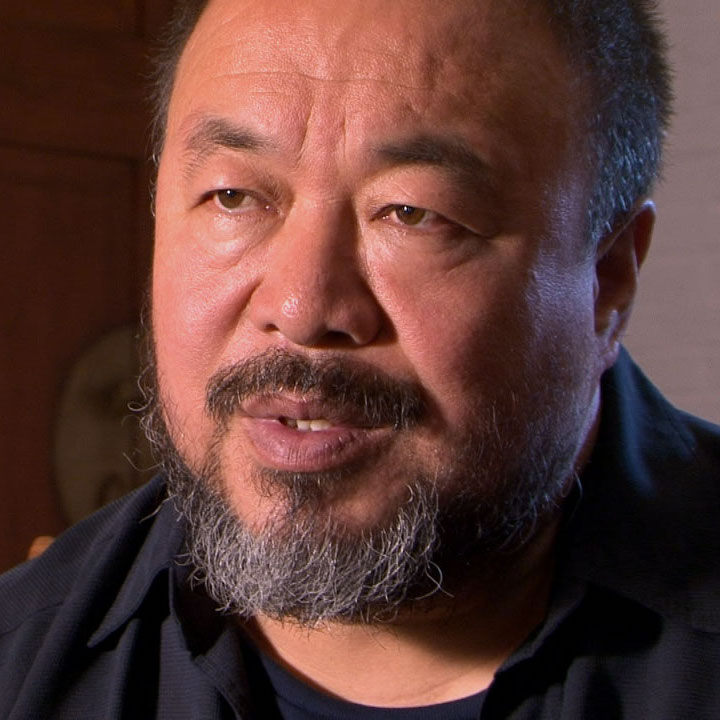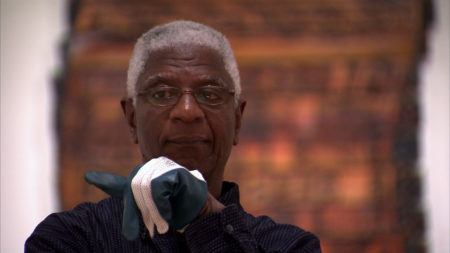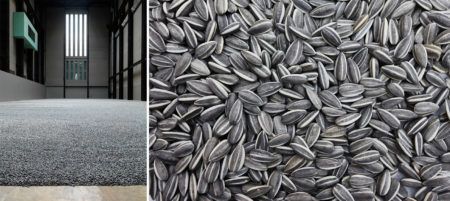Continue playing
(Time remaining: )
Play from beginning
Continue playing "{{ controller.videos[controller.getVideo(controller.currentVideo)].segmentParentTitle}}"
{{controller.videos[controller.getVideo(controller.currentVideo)].title}} has ended.
Ai Weiwei in "Change"
During his incarceration, artist Ai Weiwei’s assistants, E-Shyh Wong and Inserk Yang come to New York in his place for the unveiling of Ai’s public artwork near Central Park Circle of Animals/Zodiac Heads (2010). Wong and Yang provide insight into his working processes and their belief that neither they nor we should remain silent about his detention.
During his September 2011 interview with Art21, Ai comments on his marble sculpture of a surveillance camera, an object increasingly present in modern life in all societies, which, he says is used to “secretly monitor people’s behavior.” “But once it’s marble” he continues, “it’s only being watched. It’s not functioning anymore.”
Credits
Series Created By: Susan Dowling & Susan Sollins. Executive Producer & Curator: Susan Sollins. Series Producer: Eve Moros Ortega. Associate Curator: Wesley Miller. Director of Production: Nick Ravich. Production Coordinator: Ian Forster. Consulting Director: Charles Atlas. Editor: Lizzie Donahue. Director of Photography: Bob Elfstrom, Mark Falstad, Gary Henoch, Ian Serfontein, Joel Shaprio, Takahisa Araki, & Andrew David Watson. Additional Photography: Calistus Eziokwu & Laura Paglin. Sound: Steve Bores, Patrick Christensen, Ray Day, Darryl Dickenson, Lin Hau, Heidi Hesse, Mark Mandler, David Williams, & Dick Williams. Assistant Camera: Dave Bouley, Liu Hui, Jin Long Nan, John Marton, Joe Price, & Ted Sikora. Production Assistant: Logan Needle, & Dan Parsons. Ai Weiwei Interview: Phil Tinari. Assistant Editor: Crystal De Boulet, Dahlia Fischbein, Bahron Thomas, & Alex Zustra.
Art Direction and Design: Open, New York. Online Editor: Don Wyllie. Composer: Peter Foley. Voiceover Artist: Jace Alexander. Sound Editor: Margaret Crimmins & Greg Smith. Sound Mix: Cory Melious. Sound Assistant: Steve Giammaria. Artwork Animation: Frank Ferrigno. Graphics Animation: Urosh Perishic.
Artworks Courtesy of: Ai Weiwei; El Anatsui; Catherine Opie; Asia Society, New York; Cleveland Clinic Art Program, Arts & Medicine Institute; Jack Shainman Gallery, New York; & Regen Projects, Los Angeles. Travel Agent: Sue Mackiewicz.
Special Thanks: The Art21 Board of Trustees; Ai Weiwei studio; El Anatsui studio; Nicole Belle; Nina Berger; Lisa Binder; Tanya Brodsky; Suzanne Bronski; Pat Casteel ; Cleveland Clinic; Joanne Cohen; Rita Cordova; Ralph Cuccurullo; Andrew Daubar; Davis Museum and Cultural Center, Wellesley College ; Keith Eland; E-Shyh Wong; Jennifer Finkel; Lisa Fischman; Fotomuseum Winterthur; Harvard University; Toan Huang; Inserk Yang; Samara Levenstein; Lisson Gallery, London; Sheila Lynch; Christopher Mao; Elaine T. Meguerian; Fausto Meza; Museum for African Art, New York; Jennifer Ng; Diana Nyad; Office of the Mayor, New York; Jim Powell; Keith Shapiro; Somerset House, London; The Institute of Contemporary Art, Boston; The Metropolitan Museum of Art, New York; The Museum of Modern Art, Kamakura & Hayama; Taliesin Thomas; Larry Warsh; & Steve Wylie.
Curatorial Advisory Council: Rachel Blackburn Cozad, Kris Douglas, Gary Garrels, Karen Higa, Margo Machida, Marti Mayo, Jill Medvedow, Anne Pasternack, John Ravenal, Paul Schimmel, Katy Siegel, & Judith Tannenbaum.
Additional Art21 Staff: Daniel Barrett, Carrie Caroselli, KC Forcier, Joe Fusaro, Jessica Hamlin, Claudine Isé, Marc Mayer, Jonathan Munar, Heather Reyes, Kelly Shindler, Sara Simonson, & Diane Vivona.
Interns: Alex Abelson, Paulina V. Ahlstrom, Don Edler, Lucy Healy-Kelly, Clara Jo, David Levine, Maren Miller, Molly Nathan, Tayo Ogunbiyi, & Persis Singh. Bookkeeper: Valerie Riley.
Public Relations: DKC Public Relations. Station Relations: De Shields Associates, Inc. Legal Counsel: Albert Gottesman.
Major underwriting for Season 6 of Art in the Twenty-First Century is provided by The National Endowment for the Arts, PBS, Agnes Gund, Bloomberg, The Andy Warhol Foundation for the Visual Arts, The Horace W. Goldsmith Foundation, The Broad Art Foundation, The Japan Foundation, Toby Devan Lewis.
Closed captionsAvailable in English, German, Romanian, Italian, Japanese, Korean, Chinese, Italian
Through the Art21 Translation Project, multilingual audiences from around the globe can contribute translations, making Art21 films more accessible worldwide. Translate this video now.
Interested in showing this film in an exhibition or public screening? To license this video please visit Licensing & Reproduction.
An outspoken human rights activist, Ai Weiwei infuses his sculptures, photographs, and public artworks with political conviction and personal poetry, often making use of recognizable and historic Chinese art forms in critical examinations of a host of contemporary Chinese political and social issues. In his sculptural works he often uses reclaimed materials—ancient pottery and wood from destroyed temples—in a conceptual gesture that connects tradition with contemporary social concerns. He also employs sarcasm, juxtaposition, and repetition to reinvigorate the potency and symbolism of traditional images and to reframe the familiar with minimal means.
Ai Weiwei
Ai Weiwei
Ai Weiwei
“Every day people are coming up to us and giving us proposals of something they can do to help Weiwei. And you know at first we thought, okay maybe we should stay quiet a bit, because we don’t want to upset the Chinese government. But then we think, what would Weiwei do? And he would probably make the most noise of anybody.”
E-Shyh Wong, Assistant to Ai Weiwei
More from "Change"
Preview




